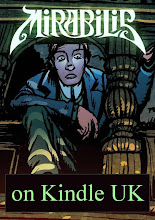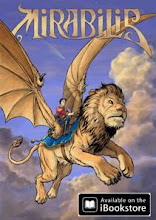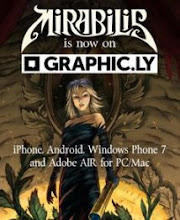 “Hi how are you I’m fine.”
“Hi how are you I’m fine.”That’s how the late Blake Snyder characterized bad dialogue. “Engaging characters talk differently than you and I,” he wrote in Save the Cat. “They have a way of saying things, even the most mundane things, which raise[s] them above the norm.”
So, writers must find ways to say familiar things in an interesting way. That applies to all prose, naturally, not just dialogue. When it works, you get lines whose poetry lets you see even a commonplace scene with fresh eyes. Buffy the Vampire Slayer ran seven seasons – call it 110 hours – throughout much of which we were watching friends arguing or making up (or making out). Happens every day, right? Yet in the hands of skilled writers like Joss Whedon, Jane Espenson, Drew Goddard, Marti Noxon and others, it was never boring. Buffy always had a new way to say “I love you”, “I hate you” and “I’m gonna dust you.”
But there are pitfalls. In the search to find a new spin on an old line, you can stray off into the realm of the downright peculiar. There was a movie (which will remain nameless because I don’t actually know what it was called) in which the heroine said, “Somebody is trying make me dead” instead of the plain old “Somebody is trying to kill me”. Trouble is, that doesn’t sound like great dialogue, it just sounds like English isn’t the character’s first language. Don’t let fear of a cliché drive you to gobbledygook.
“Match me, Sidney.”Ah, now - that’s the great Clifford Odets, three words comprising one of the most famous lines in cinema. But but but, you’ll be saying, a simple little bit of dialogue like that can’t work without an actor to deliver it. True; the line wouldn’t have the same impact on the page of a comic as when it’s spoken with chilling egomania by Burt Lancaster. So try this classic Odets writing:
SALLYNobody talks like that. Of course they don’t. But where “He wants to make me dead” stinks with the sweaty desperation of an impending deadline, Odets’s dialogue comes from truth. It tells us everything about Sidney’s resentments, his fears and what he thinks he needs. And, most importantly, it sings.
But Sidney, you make a living. Where do you want to get?
SIDNEY
Way up high, Sam, where it's always balmy. Where no one
snaps his fingers and says, 'Hey, shrimp, rack the balls!'
Or, 'Hey, mouse, mouse, go out and buy me a pack of butts.'
I don't want tips from the kitty. I'm in the big game with the
big players. My experience I can give you in a nutshell, and
I didn’t dream it in a dream either: dog eat dog. In brief,
from now on, the best of everything is good enough for me.
But, before you decide how to have a character say something, you need to stop and think whether they need to open their mouth at all. In a moving visual medium, dialogue is the last storytelling tool you reach for. Hitchcock’s test was to watch a movie with the sound off and see if he could still follow the story. In a comic, you’re not going to get the nuance that an actor can bring with just an expression or a gesture, but you do still have a very mobile viewpoint so you don’t need to use as many words as in a novel. (Well, duh. But remember: I’m just talking about the dialogue here.)
Somebody once said you should never have more than twenty words of dialogue per comic panel. There are rules and there are rules. If you look at pretty much any panel in a comic by Alan Moore, Neil Gaiman or me (see what I did there?) you’re going to count more than twenty words. Some comics it’s “Hey!” “Stop!” “Never!” Fine, that’s different strokes… We’re not going to talk about quantity here, we’re going to talk about what constitutes good dialogue.
First rule, as always, is hide your exposition. Dialogue doesn’t have to do any work that the images are doing already. Suppose our hero is talking to a wild-eyed guy who’s setting a clock strapped to a makeshift contraption. There’s no need for dialogue like: “Once you activate the timer, this bomb will go off in seven minutes.” We can already see that it’s a bomb, and we know what timers are used for. Instead the hero gingerly picks up the device:
HEROGood dialogue serves more than one purpose. The bomb maker is telling the hero he won’t have much time once the bomb is primed. That’s the surface meaning. But notice that every example he gives is a reminder of mortality: cigarettes, taxes, family. Then he caps it with ironic emphasis, because starting a war is exactly what the hero is going to do.
How long’ll I have?
BOMB MAKER
Plenty of time. Smoke a cigarette. Fill out your
tax return. Make your weekly phone call to Mom.
Just don’t start War and Peace.
And then later, if you want the tension that comes with a ticking clock, why not insert a countdown in captions from the moment the bomb is activated? Because, you know, “seven minutes” would’ve meant nothing anyway. With a countdown you get immediacy.
Dialogue like the bomb maker’s there is overdetermined. On a subliminal level the best dialogue bombards the audience with a whole bunch of associations and resonances designed to grab their full attention:
“He says there’s a storm coming.”Or how about one of the most effective dialogue exchanges ever written:
“I know.”
“Do you expect me to talk?”
“No, Mr Bond, I expect you to die.”
That’s superb writing because it takes us (and Bond) by surprise and explodes an emotional charge that powers the rest of the scene. Whereas look at something like this:
“You can’t just let them die. It’s inhuman!”Yawn. Even the most detail-obsessed sci-fi geeks demand a little more emotional engagement than that. Because most of us are more interested in character than we are in information. And that applies even when the information concerns the deaths of millions of people. On the surface, that’s just a statistic. It takes storytelling to make sense of it on a human level.
“Who ever said I was... human?”
Penultimate word on this subject from Mr Blake Snyder: “Dialogue is your opportunity to reveal character and tell us who this person is as much as what he is saying. How someone talks is character and can highlight all manner of that character’s past, inner demons and outlook on life.”
And, to prove that point, the final word goes to Ms Rosenberg, courtesy of Jane Espenson:
“It’s a doodle. I do doodle. You, too. You do doodle, too.”























No comments:
Post a Comment